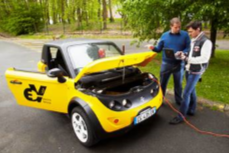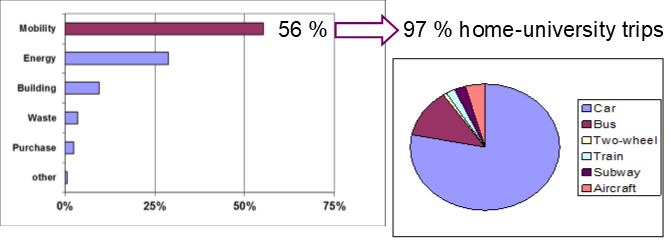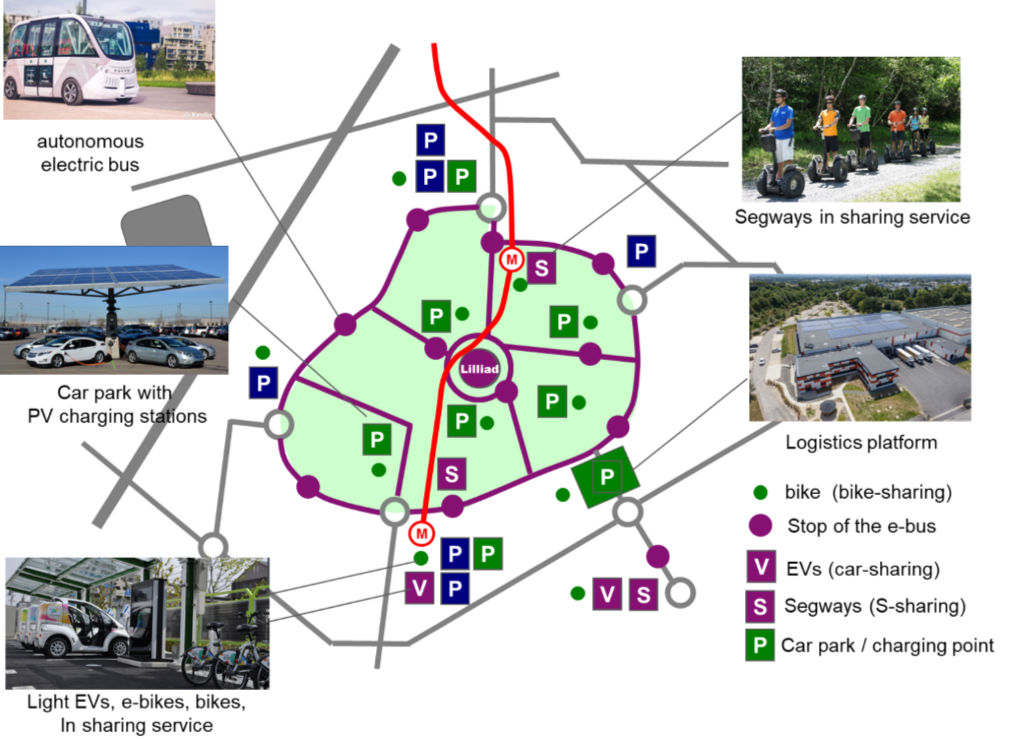Programme CUMIN
CUMIN Program
 The CUMIN (Campus of University with Mobility based on Innovation and carbon Neutral) program aims to develop a demonstrator campus, based on electro-mobility, in order to reduce greenhouse gas emissions at the campus Cité Scientifique of the University of Lille.
The CUMIN (Campus of University with Mobility based on Innovation and carbon Neutral) program aims to develop a demonstrator campus, based on electro-mobility, in order to reduce greenhouse gas emissions at the campus Cité Scientifique of the University of Lille.
The ultimate goal of CUMIN is to use the eco-campus as a living lab to develop eco-cities.
CUMIN is an interdisciplinary program, which gathers research teams on electrical engineering from L2EP, on computer and control sciences from CRIStAL, and on city planning from the TVES.



Greenhouse gases emissions of the campus Cité Scientifique

The carbon report of the University of Lille shows that 56% of GHG emissions are due to mobility. From this, 97% is due to daily home-university trips.
Projects of CUMIN:
- GRETA, Generation using Renewable Energy for Transport Activities of an eco-campus
- EVE, Electric Vehicle, Estimation of mobility for an eco-campus
- MOUVE, MObility and Use of electric VEhicles based on dedicated charging infrastructure
- ADAM, Advanced Driver Analysis for electro-Mobility
of an eco-campus - SANAA, Safe and secure Navigation of Autonomous Vehicles
- REMUS, Recovery of Energy from Metros in University based on sustainability
- TESS, Technical-Economical Study of Sustainable campuses, TESS Post-doc proposal
- SARA, Social Acceptance of electric vehicles in Restricted Areas, SARA Post-doc proposal
Phases of CUMIN:
Phase 1 – Analysis
This phase aims to define the technical requirements for an eco-campus: consumption of electric vehicles, required production of renewable energy, optimal distribution of charging stations, social acceptability, etc.
This phase should lead to a technical-economical model of the future campus.
Phase 2 – Implementation
This phase aims to progressively ban conventional cars from the campus. The contemplated measures are:
- To motivate users of the University to replace their thermal vehicles with electrified vehicles.
- The deployment of charging stations for electric vehicles on the campus.
- The integration of renewable energy sources to supply the charging stations.
- To propose solutions for internal mobility—e.g. autonomous shuttles, e-bikes, electric car sharing, etc.

Possible future composition of the campus Cité Scientifique
Extension of CUMIN:
The University of Québec à Trois-Rivières (Canada) has decided to adopt the model of CUMIN for its own campus. A collaboration between both universities has been established in 2018, to create the International Associate Laboratory (LAI): e-CAMPUS (electro-mobility for CAMPus of Universities based on Sustainability).
The objective of e-CAMPUS is to develop methodologies for the research and implementation of electro-mobility in university campuses, towards a future development of eco-cities.
Contact: Prof. Alain BOUSCAYROL, Coordinator of CUMIN, L2EP / University of Lille.







